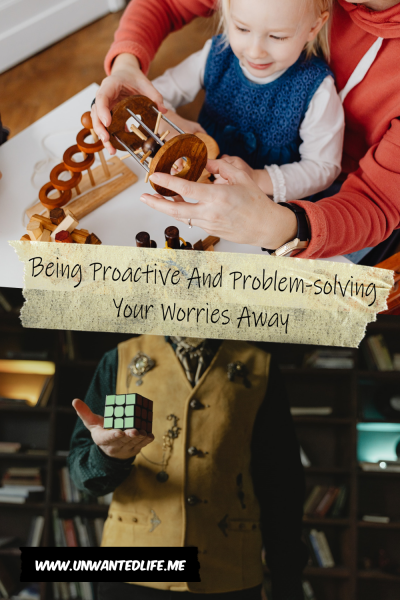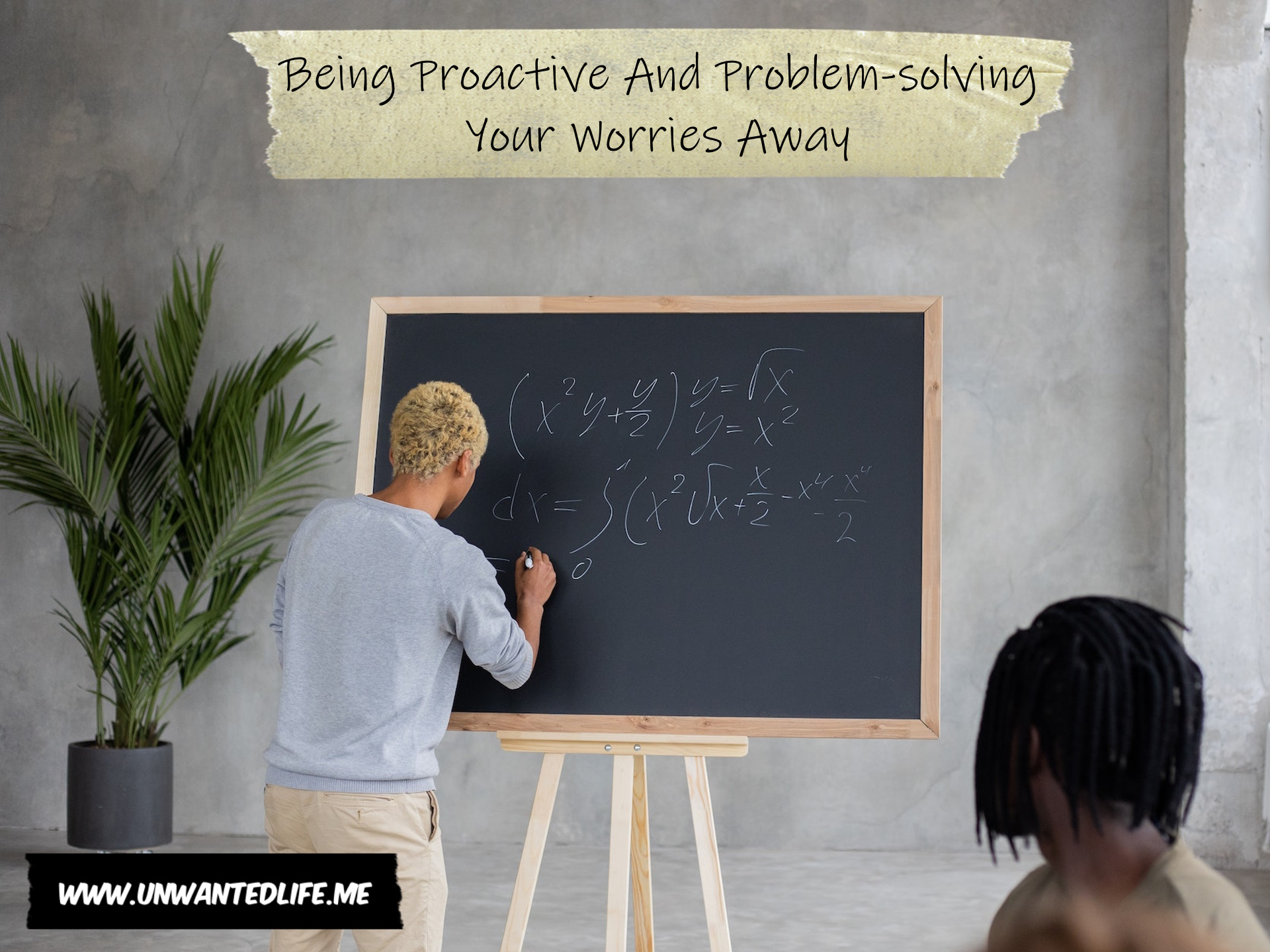If there’s one skill in life that everyone should have, it’s problem-solving. However, we don’t always do it right. Thankfully, the problem-solving theory has us all covered. So welcome to my article on how to problem-solve your worries away.
What Is Problem-solving Therapy?
At the root of problem-solving theory is the concept that poor mental health arises from maladaptive and ineffective coping, and by adopting an optimistic and more realistic view of coping, people can reduce distress and maintain their wellbeing (PositivePsychology.com).
So what makes problem-solving a useful skill regarding our mental health? Well, unresolved problems fester and take a toll on our wellbeing, as well as small problems growing to become major problems (HeretoHelp). Thus, problem-solving therapy is designed to teach people the tools needed to identify and solve the problems they face, both big little and large (Verywell Mind). This then allows us to reduce the stress we have in our lives, which will have a knock-on effect on our mental and physical health.
But the benefits don’t stop there. A study by Garand et al. (2014) found that teaching family caregivers of older adults with a new cognitive diagnosis problem-solving skills significantly reduced feelings of depression and anxiety.
How To Do Problem-solving
There are six steps to good problem-solving, according to Living Well. These six steps are:
- Step 1: Identify the problem.
- Step 2: Identify your options.
- Step 3: Weigh your options.
- Step 4: Choose an option.
- Step 5: Put it into action.
- Step 6: Review.
Although this might be the more traditional version of the problem-solving steps, Mourtos, Okamoto, and Rhee (2004) proposed an additional step, a step they called step 0: engage/motivation. This article will adopt step 0.
Step 0: Engage/motivation
Before you start to tackle the problem that needs solving, it’s important to make sure you’re motivated to see this through. Think of this as an affirmation. Therefore, remind yourself that you can do this.
Step 1: Identify the problem
If you want to be able to overcome the problem before you, you’ll first need to accurately identify the problem. Sometimes we don’t always know what the problem is right away, and if you’re going through these problem-solving steps with a therapist, then you’d help you explore that. But if you’re doing this as self-care, then you could try working out the problem using a journal.
Be as specific as possible when trying to identify your problem, try to avoid using opinions as you identify your problem, and try to stick to facts (HeretoHelp).
Look at the problem from every angle. Ask yourself, when did the problem first start? Consider how a friend might interpret the problem and what you might think or say to this friend if they came to you about this problem.
Step 2: Identify your options
For every problem, there is a solution, and there’s often more than one solution. Work out all the possible options available for solving this problem. It doesn’t matter how likely or unlikely they are to work, list them all. Making a list in your journal can make this task easier.
Step 3: Weigh your options
Now that you have a list of options in your journal, it’s time to work through each of the options to see what the strengths and weaknesses of using each option are. This will help you work out which option is the best for you.
Step 4: Choose an option
Now it’s time to pick the best option or the best selection of options ready for step 5.
Step 5: Put it into action
If you want to overcome your problem, then you need to do more than just work out what your options are, and this is the step where you do that. It’s time to put your chosen options into action.
Step 6: Review
Like any good scientist, you should always review the outcomes of the options you took action on. Again, this is where a journal can come in handy. Ask yourself, what did you learn from your attempt at problem-solving? Would this solution work for similar problems? If the solution didn’t work, what can you try next?
Obstacles To Problem-solving
Problem-solving is not a flawless process as there are a number of obstacles that can interfere with our ability to solve a problem quickly and efficiently. These obstacles include:
Assumptions
Our brains love a shortcut. As such, we’re prone to making assumptions. However, these assumptions can stop us from realising what our problems really are, as well as becoming an obstacle to the creation of solutions to our problems. Therefore, when trying to work through the problem-solving steps, be mindful of any assumptions that might get in the way.
Timing
There’s a saying that says, “Don’t say something you regret out of anger” and the same can be true when making decisions. If there’s an important problem we need to solve, then we may not be at our best at doing this if we’re upset, stressed, lack motivation, or angry. In a problem-solving manual created by Nezu, Nezu, and D’Zurilla (2012), they have outlined how to overcome this issue called the S.S.T.A.. This can also double up as a simple problem-solving technique.
- STOP: Notice your feelings when facing a problem.
- SLOW DOWN: Give your mind and body a chance to lower the intensity of your negative arousal.
- THINK: Use your problem-solving skills to try to cope with the problem.
- ACT: Put your problem-solving ideas into action.
In short, before you try to work out how to tackle your problems, you may benefit from doing something about your emotional state if it might hamper your efforts. Strategies to slow down include breathing exercises, meditation, relaxation, going for a walk, and talking to someone. All of these can help you get into a better headspace so you can resolve your problem.

Misleading or irrelevant information
With the world’s information at our fingertips, you’d think that we’d be better at detecting misleading or irrelevant information. But that’s not the case. With the rise of the internet came the rise of misinformation. This is no less true when trying to problem-solve in our everyday lives. Therefore, to be successful at problem-solving, we need to consider what information relating to the issue is relevant. That way, the irrelevant information won’t lead us to solutions that won’t work.
Big picture
Sometimes we can become fixated on viewing problems in the same way every time, where we can focus on the small scale. However, problems can often be very complex, especially when people are involved. Therefore, we have to make sure we can see the whole problem and all the potential solutions. This will make our problem-solving skills function at their best level.
Relying on what worked before
As the saying goes, “This is the way it’s always been done” and “If it ain’t broke, don’t fix it”. Which can be pretty terrible advice. Just because something worked before to fix a problem, doesn’t mean it’ll work again. For example, what might work for me might not work for someone else.
When I had to overcome my negative intrusive thoughts that would fuel my psychosis, challenging the thoughts is one of the most widely used methods to do that. However, that only made it worse for me. The method that did work for me was to not engage with my thoughts at all and to not try to suppress those thoughts, either. Therefore, remember to be flexible with problem-solving and avoid using our brain’s lazy energy-saving shortcuts.
Summary
Problem-solving is a good skill to have in your wellbeing toolbox, but that doesn’t mean it’s a good fit for everyone. There are also going to be times when there aren’t clear solutions, such as trying to find a new purpose in life, which aren’t suited for problem-solving (Verywell Mind). Nevertheless, if you want to tackle the source of something like stress or want to work out how you could become better able to adapt to a new health condition, then problem-solving can be invaluable.
As always, leave your feedback in the comments section below. Also, please share your experiences with problem-solving in the comments section below as well. Don’t forget, if you want to stay up-to-date with my blog, then sign up for my newsletter below. Alternatively, get push notifications for new articles by clicking the red bell icon in the bottom right corner.
Lastly, if you’d like to support my blog, you can make a donation of any size below. Until next time, Unwanted Life readers.
References
Nezu, A. M., Nezu, C. M., & D’Zurilla, T. (2012). Problem-solving therapy: A treatment manual. springer publishing company. Retrieved from https://dreichenbaumcbtsheets.com/Problem%20Solving%20Therapy%20and%20SMART/PST%20-%20Stop%20Think%20and%20Slow%20Down%20Method.pdf and https://www.springerpub.com/media/springer-downloads/Problem-Solving-Therapy-Supplement.pdf.
Garand, L., Rinaldo, D. E., Alberth, M. M., Delany, J., Beasock, S. L., Lopez, O. L., Reynolds III, C. F., & Dew, M. A. (2014). Effects of problem solving therapy on mental health outcomes in family caregivers of persons with a new diagnosis of mild cognitive impairment or early dementia: a randomized controlled trial. The American Journal of Geriatric Psychiatry, 22(8), 771-781. Retrieved from https://www.ncbi.nlm.nih.gov/pmc/articles/PMC4021000.
Mourtos, N. J., Okamoto, N. D., & Rhee, J. (2004). Defining, teaching, and assessing problem solving skills. In 7th UICEE Annual Conference on Engineering Education (pp. 1-5). Retrieved from https://www.sjsu.edu/people/nikos.mourtos/docs/UICEE%2004%20Mumbai.pdf.


Once again the clarity of thought and detail in your post are amazing. When we face challenges, we have the option of either confronting it or stepping away from it. These points on problem-solving can help us become more clear about resolving an issue instead of surrendering to procrastination and uncertainties. Thank you for sharing such great tips.
Thanks for commenting
I’m all about this process. I try hard to be proactive and sometimes I get really cranky when I’ve tried so hard to avoid an issue and then somehow it happens anyway due to other people being careless.
Sometimes no matter what you do right, things can still go wrong. The universe is a complex place
Sometimes take time to identify the problem and I’m working with solving a problem with mental that is not allowing to function properly and taking me a while to figure it out.
I’m not entirely sure what you mean by what you said, sorry. But thanks for commenting
Such a great read. I love this because I’m walking away feeling more motivated 😌 thank you for sharing
Awesome
Love this post, especially the addition of motivation. I struggle with that a lot so it’s great that’s included in the framework! 💙
Thank you
This is a very deep and informative post. Definitely bookmarking this to come back in the future. Thank you for sharing.
Thanks for commenting
This was really interesting to read about the steps to help solve problems I haven’t really thought about using a structure like this to solve a problem. But I can see how the process can really help with understanding. Thank you for sharing your thoughts and suggestions.
Lauren – bournemouthgirl
Thank you for sharing your thoughts